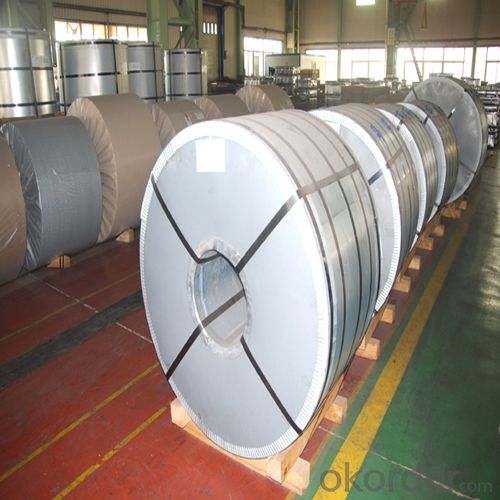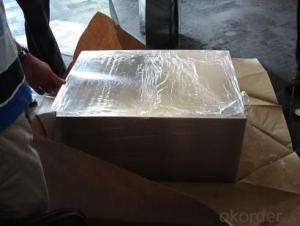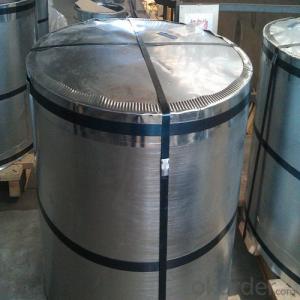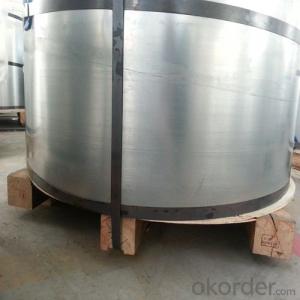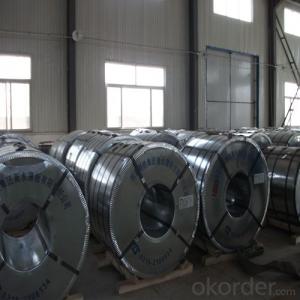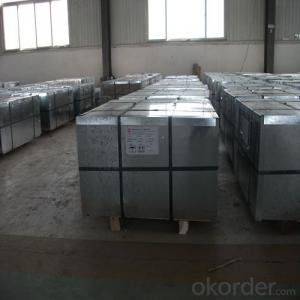Electrolytic Tinplate of Prime Quality for Metal Containers Use
- Loading Port:
- Shanghai
- Payment Terms:
- TT OR LC
- Min Order Qty:
- 25 m.t.
- Supply Capability:
- 15000 m.t./month
OKorder Service Pledge
OKorder Financial Service
You Might Also Like
Specification
1.Structure of Electrolytic Tinplate of Prime Quality for Metal Containers Use Description
Electrolytic Tinplate undoubtedly enjoys the pride of place as a packaging medium especially for food. It owes its unique position to its "nine layer sandwich structure", each of which contributes to its eminence as a packing material. The steel base of electrolytic tinplate provides the necessary strength and formability for can fabrication. The tin-iron alloy layer provides the bond between the steel and free tin layer. The free tin layer is not only responsible for the attractive bright finish and ease of solderability but is also non-toxic- a factor of vital importance in food packaging!
2.Main Features of the Electrolytic Tinplate of Prime Quality for Metal Containers Use
Appearance – Tinplate is characterized by its beautiful metallic luster. Products with various kinds of surface roughness are produced by selecting the surface finish of the substrate steel sheet.
Paintability and printability – Tinplates have excellent paintability and printability. Printing is beautifully finished using various lacquers and inks.
Formability and strength – Tinplates have got very good formability and strength. By selecting a proper temper grade, appropriate formability is obtained for different applications as well as the required strength after forming.
Corrosion resistance – Tinplate has got good corrosion resistance. By selecting a proper coating weight, appropriate corrosion resistance is obtained against container contents. Coated items should meet 24 hour 5 % salt spray requirement.
Solderability and weldability – Tinplates can be joined both by soldering or welding. These properties of tinplate are used for making various types of cans.
Hygienic – Tin coating provides good and non toxic barrier properties to protect food products from impurities, bacteria, moisture, light and odours.
Safe – Tinplate being low weight and high strength makes food cans easy to ship and transport.
Eco friendly – Tinplate offers 100 % recyclability.
Tin is not good for low temperature applications since it changes structure and loses adhesion when exposed to temperatures below – 40 deg C.
3.Electrolytic Tinplate of Prime Quality for Metal Containers Use Images

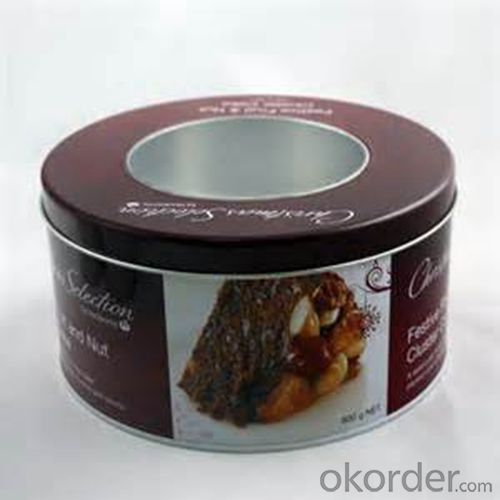
4.Electrolytic Tinplate of Prime Quality for Metal Containers Use Specification
Specification of :
Standard: ISO 11949 -1995, GB/T2520-2000,JIS G3303,ASTM A623, BS EN 10202
Material: MR,SPCC
Thickness:0.15mm - 0.50mm
Width: 600mm -1150mm
Temper: T1-T5
Annealing: BA & CA
Coil Inner Diameter: 508mm
Weight: 6-10 tons/coil 1~1.7 tons/sheets bundle
Passivation:311
Oil: DOS
Surface: Finish,bright,stone,matte,silver
5.FAQ of Electrolytic Tinplate of Prime Quality for Metal Containers Use
- What is tinning and how does it work?
Tinning is the process of thinly coating sheets of wrought iron or steel with tin, and the resulting product is known as tinplate. It is most often used to prevent rust.
- Do you only have prime quality tinplate?
We can supply both prime and second quality tinplate.
- Q: How is tinplate affected by different types of cosmetics?
- Tinplate, which is a thin steel sheet coated with a layer of tin, is generally resistant to the effects of different types of cosmetics. However, certain cosmetics that contain high levels of acids or alkalis can potentially cause corrosion on the tin coating. Additionally, prolonged exposure to certain chemicals or solvents found in cosmetics may lead to slight discoloration or tarnishing of the tinplate. Therefore, it is important to choose cosmetics that are formulated to be safe for use with metal packaging, and to avoid prolonged contact between cosmetics and tinplate to maintain its appearance and integrity.
- Q: How is tinplate coated for paint cans?
- Tinplate is coated for paint cans through a process called electrolytic tin coating, where a thin layer of tin is applied to the surface of the steel sheet. This coating provides protection against corrosion and ensures the paint cans are suitable for storing various types of paints and coatings.
- Q: What is the difference between Maguchi Tetsu tinplate and galvanized board
- Tin plated steel sheet and strip, also known as tinplate, the steel plate (belt) surface tin plated, has good corrosion resistance, non-toxic, can be used as packaging material cans, inside and outside the cable sheath, telecommunications instrument parts, flashlight and other hardware.
- Q: Can tinplate be used for storage containers?
- Yes, tinplate can be used for storage containers. Tinplate is a type of steel coated with a thin layer of tin, which provides corrosion resistance and makes it suitable for storing a wide range of products, including food, beverages, chemicals, and more.
- Q: Can tinplate be used for marine applications?
- Yes, tinplate can be used for marine applications. Tinplate is known for its excellent corrosion resistance, making it a suitable material for marine environments where exposure to saltwater and moisture is a concern. Additionally, tinplate's strength and durability make it ideal for various marine applications such as packaging, containers, and components for boats and ships.
- Q: Can tinplate be used for packaging of chemicals?
- Yes, tinplate can be used for packaging of chemicals. Tinplate is a type of steel coated with a thin layer of tin, making it resistant to corrosion. This makes it suitable for packaging chemicals as it helps protect the contents from contact with air and moisture, ensuring their stability and longevity. Tinplate containers are also known for their strength and durability, making them a reliable choice for chemical packaging.
- Q: What are the advantages of using tinplate for electrical enclosures?
- There are several advantages of using tinplate for electrical enclosures. Firstly, tinplate offers excellent corrosion resistance, ensuring the durability and longevity of the enclosure even in harsh environments. Secondly, tinplate has high strength and rigidity, providing robust protection for the electrical components inside. Additionally, tinplate is a cost-effective option compared to other materials, making it a popular choice for mass production. Lastly, its malleability allows for complex shapes and designs, providing flexibility in enclosure manufacturing.
- Q: What are the main manufacturers of tinplate?
- The main manufacturers of tinplate include companies like ArcelorMittal, Tata Steel, Thyssenkrupp, Nippon Steel Corporation, and JFE Steel Corporation.
- Q: How does the tin coating affect the weldability of tinplate?
- The tin coating on tinplate actually improves the weldability of the material. It acts as a protective layer, preventing oxidation and minimizing the formation of impurities during the welding process. This results in a stronger and more reliable weld, making tinplate a preferred choice for various applications requiring good weldability.
- Q: What are the main applications of tinplate in the pet care industry?
- Tinplate is commonly used in the pet care industry for packaging various products such as pet food, treats, and supplements. Its main applications include canning and sealing these products, ensuring their long shelf life and preserving their quality. Tinplate's ability to resist corrosion and provide a protective barrier against light, moisture, and oxygen makes it an ideal choice for pet care products that require durability and preservation. Additionally, tinplate's versatility allows for unique and appealing packaging designs, attracting pet owners and enhancing product branding.
Send your message to us
Electrolytic Tinplate of Prime Quality for Metal Containers Use
- Loading Port:
- Shanghai
- Payment Terms:
- TT OR LC
- Min Order Qty:
- 25 m.t.
- Supply Capability:
- 15000 m.t./month
OKorder Service Pledge
OKorder Financial Service
Similar products
Hot products
Hot Searches
Related keywords


